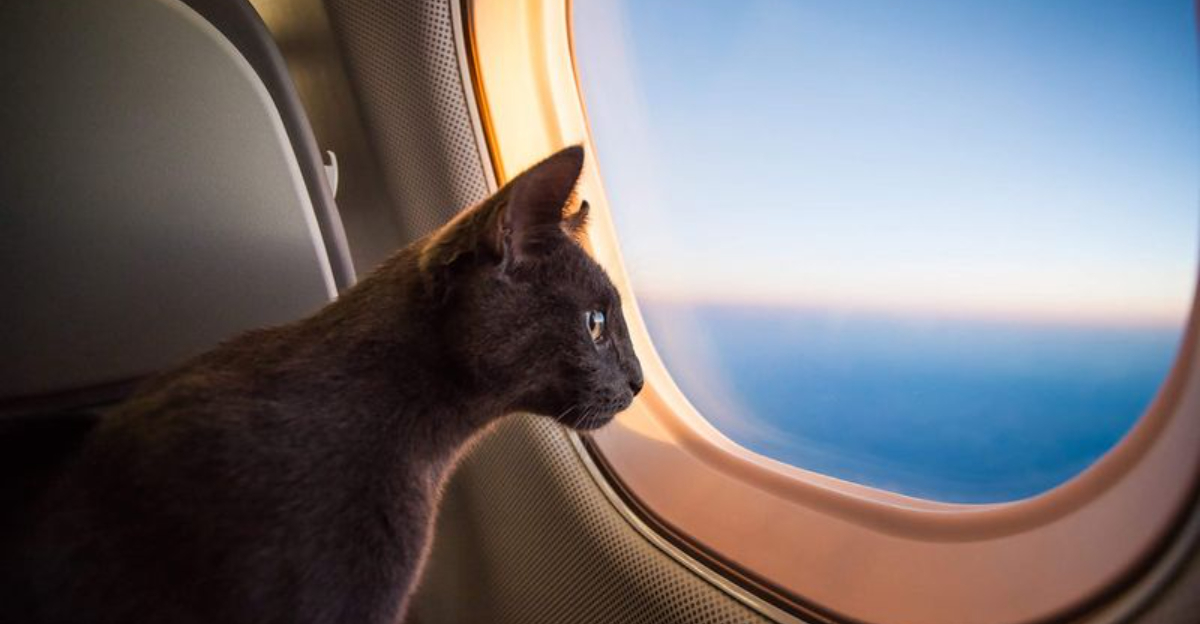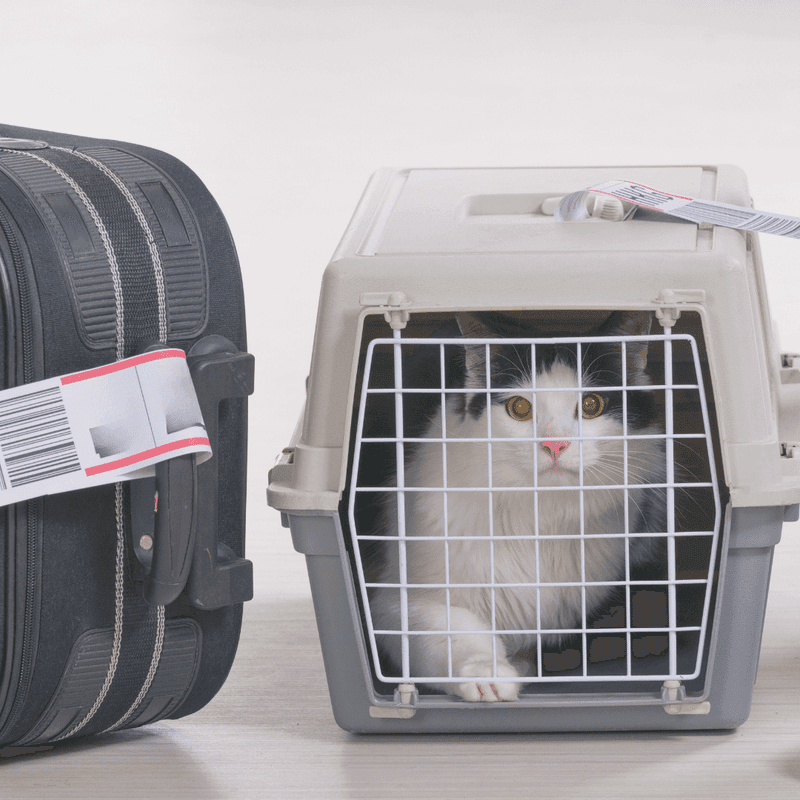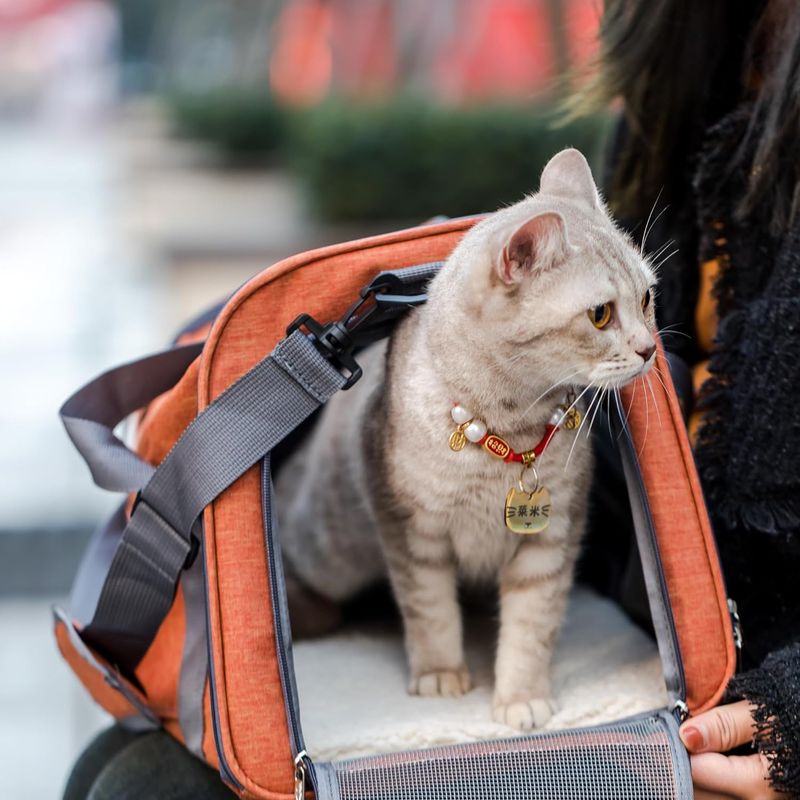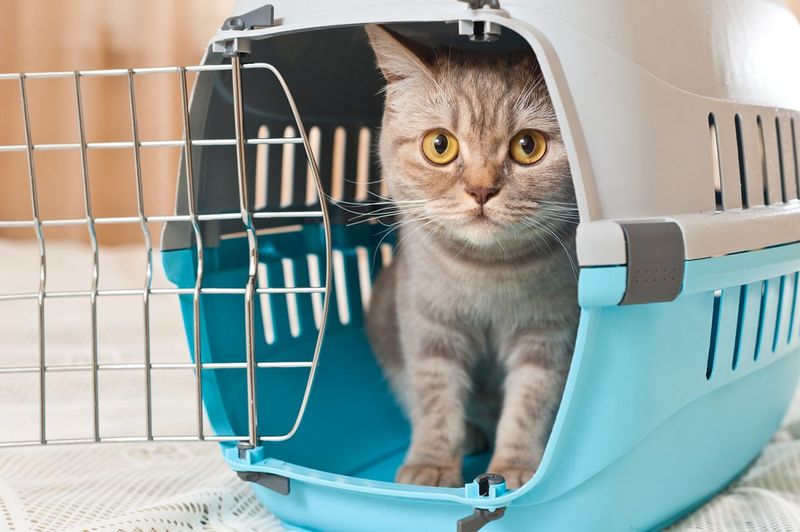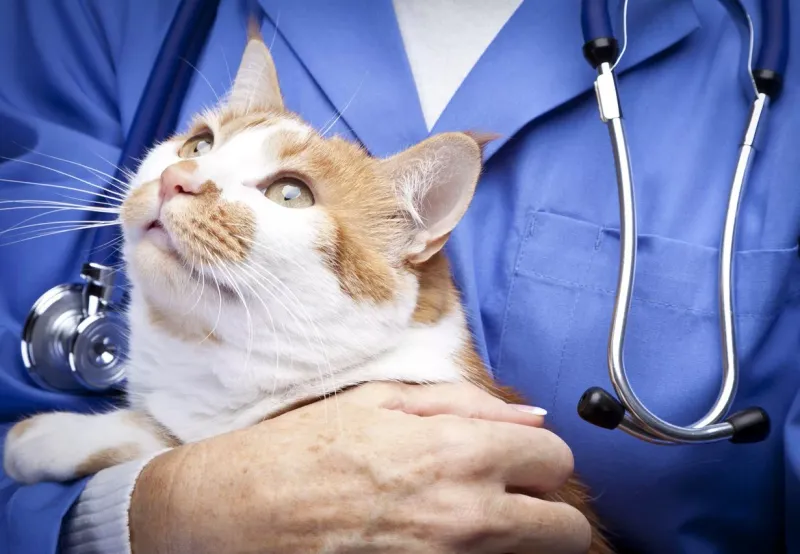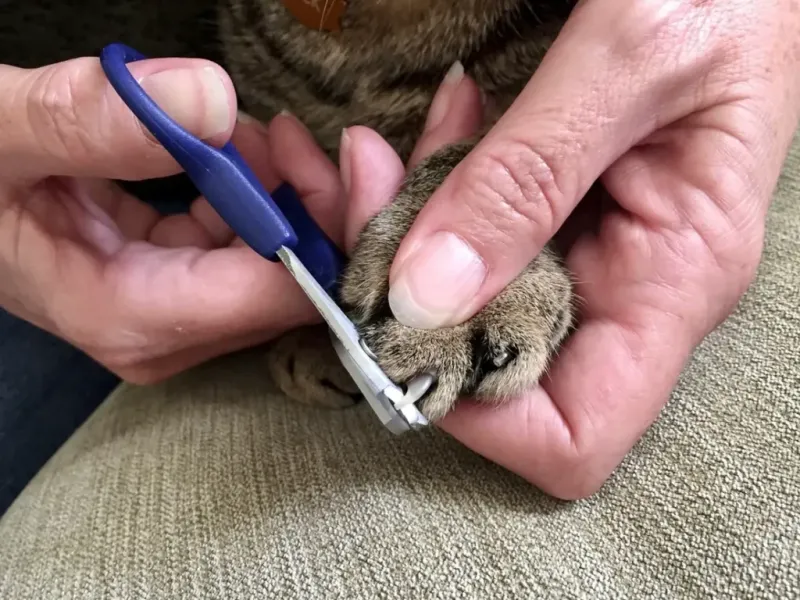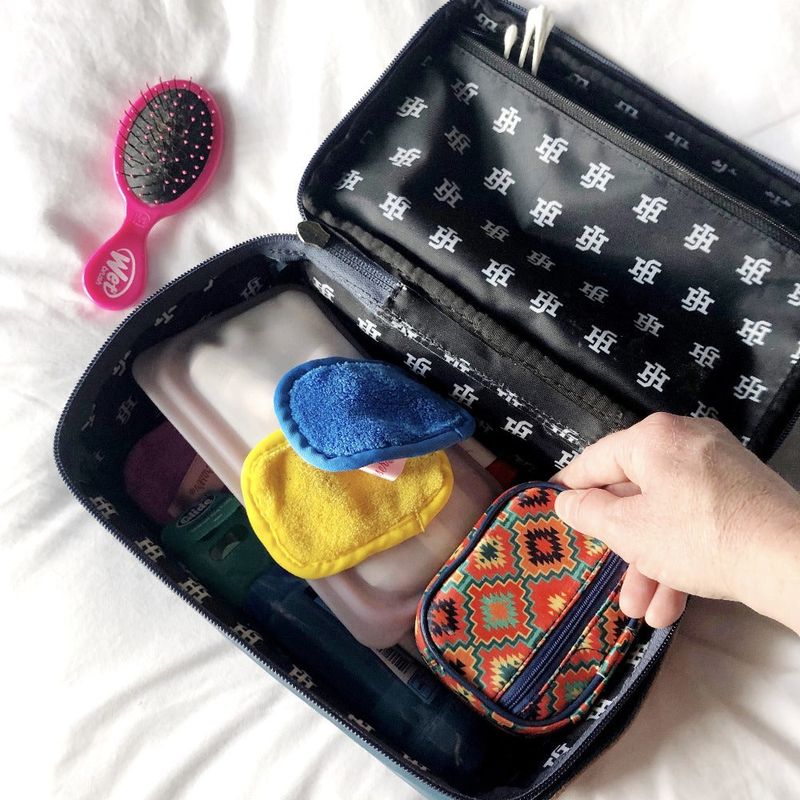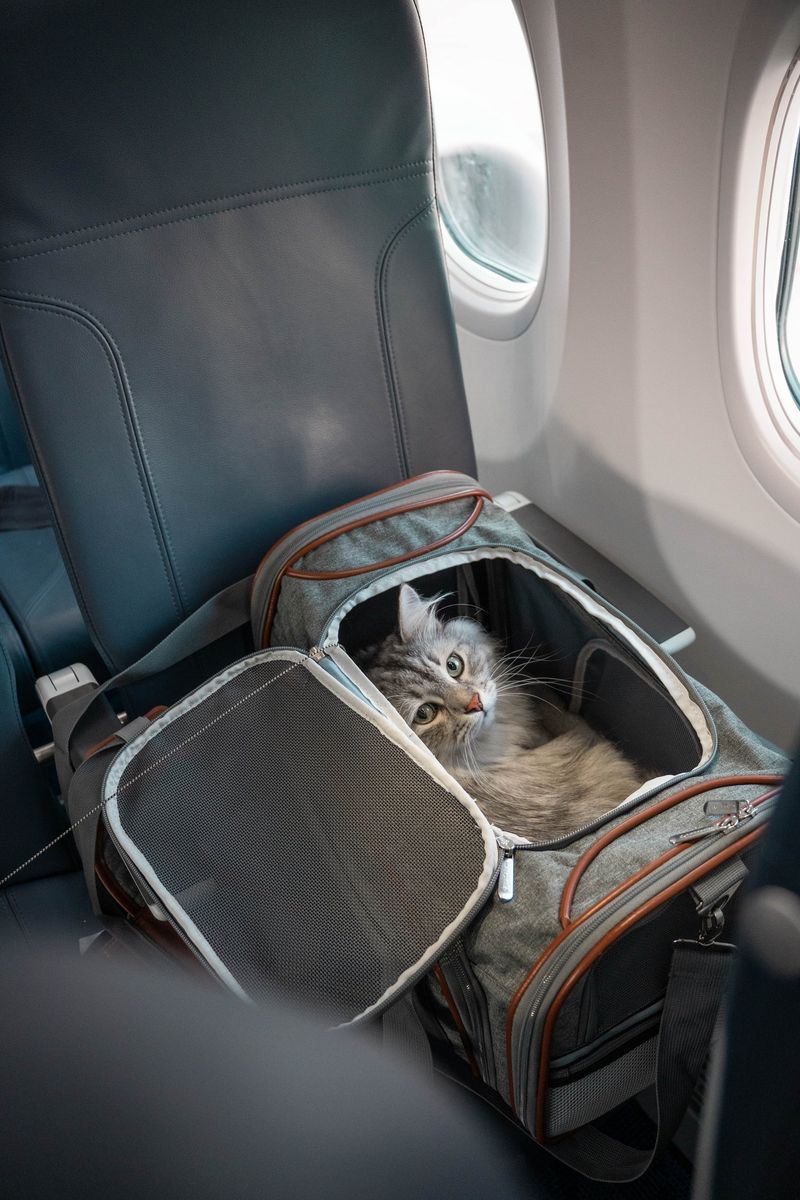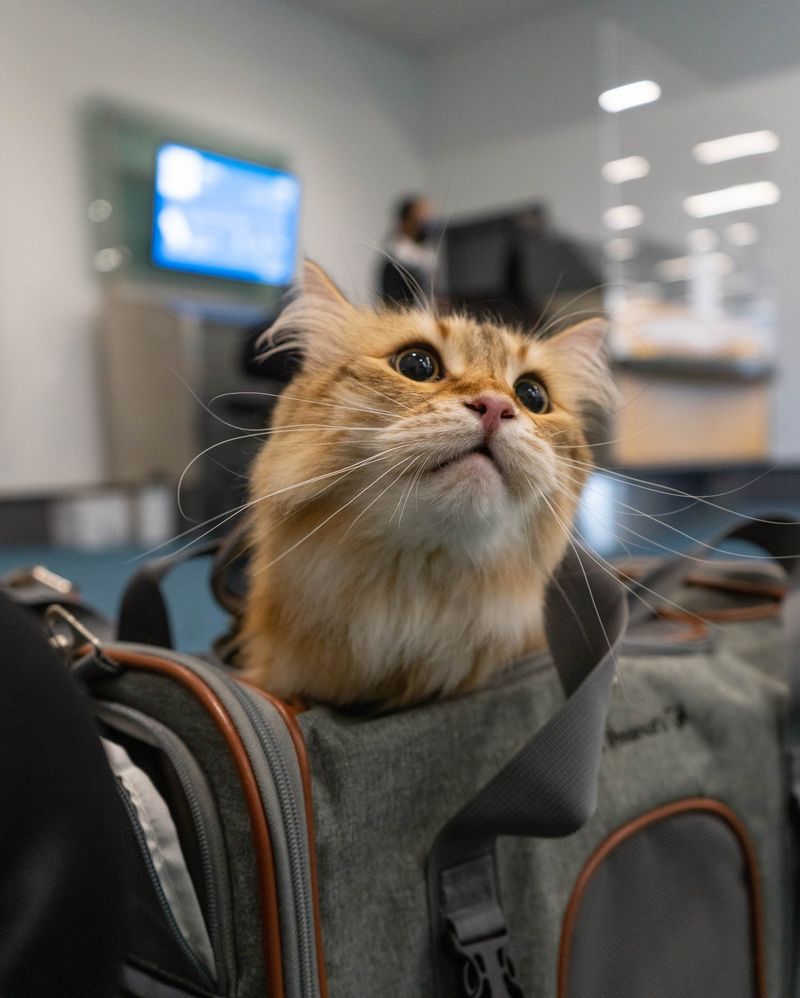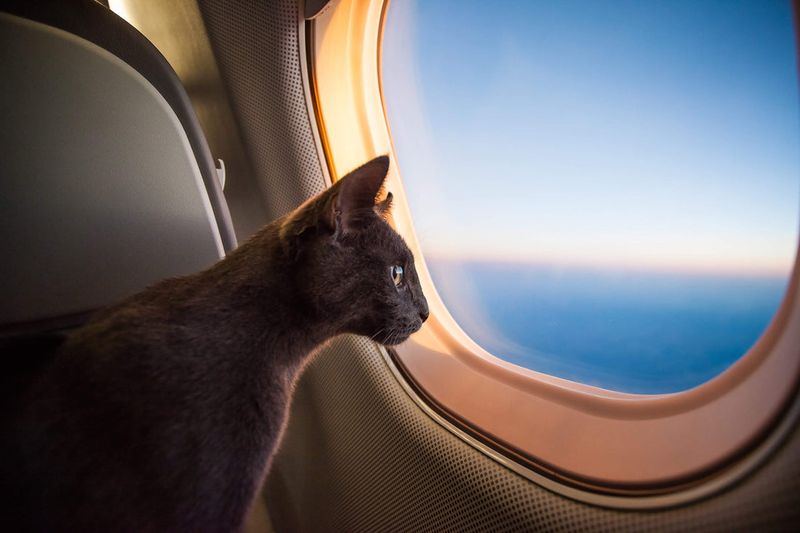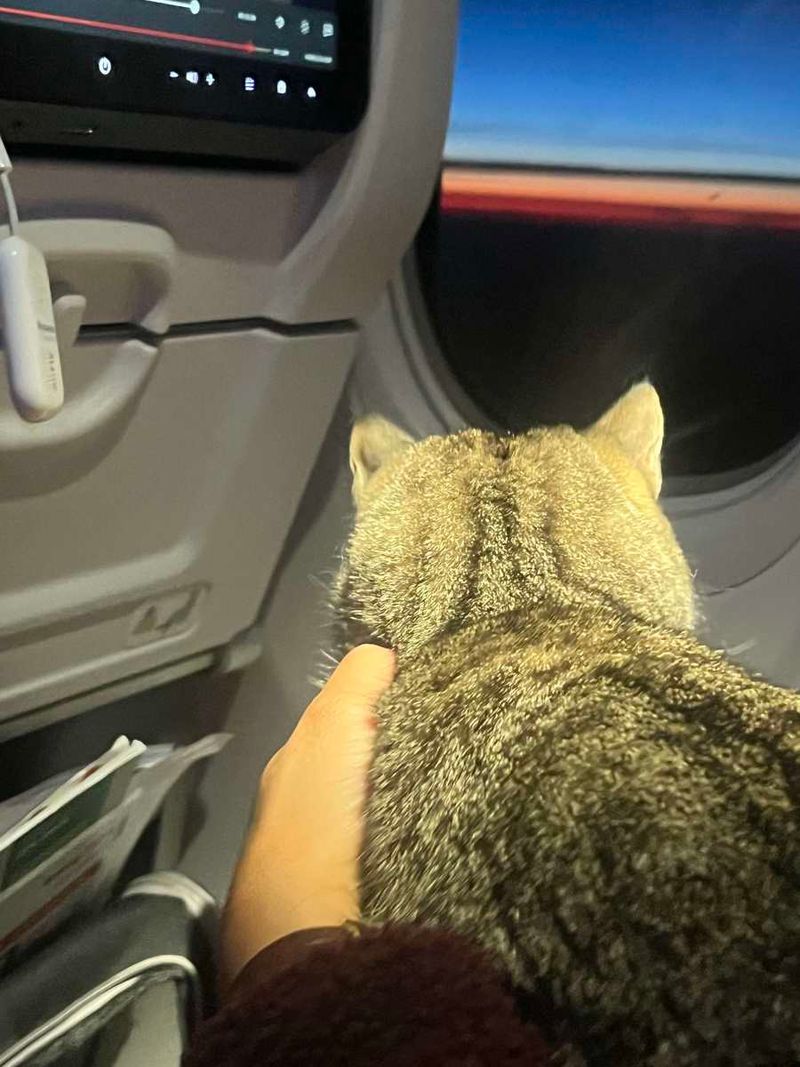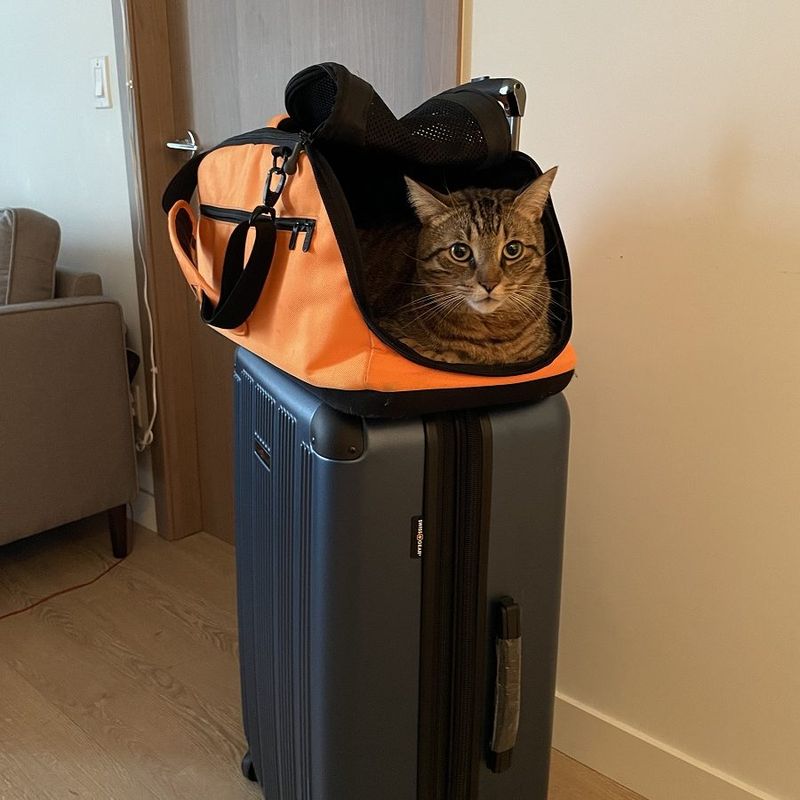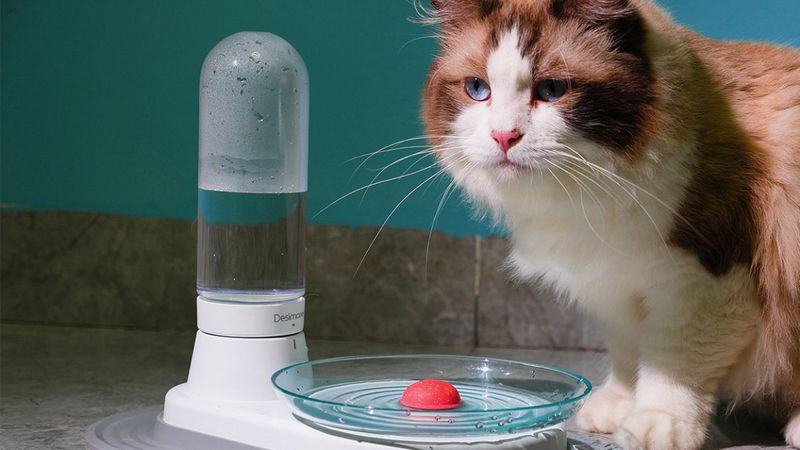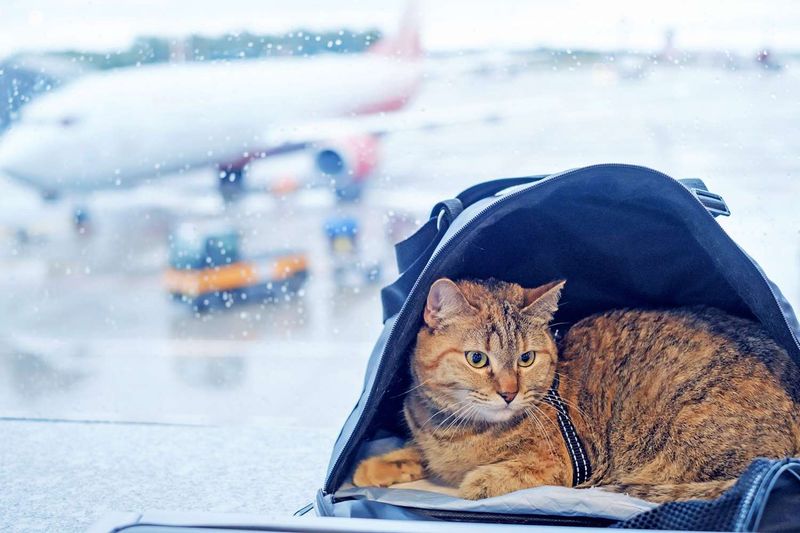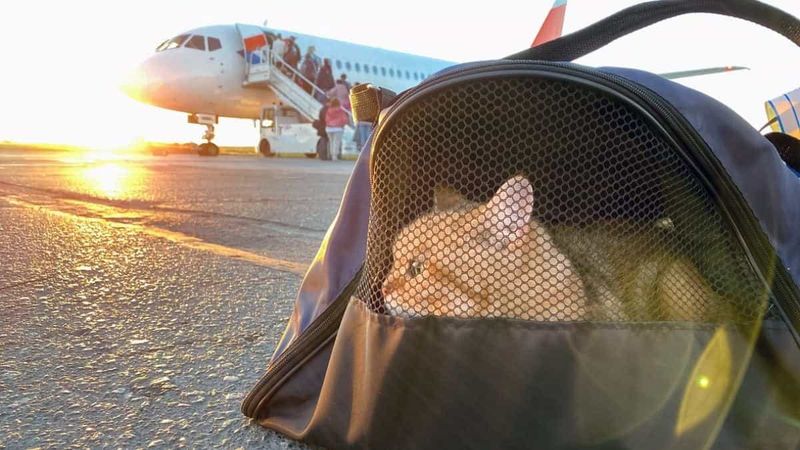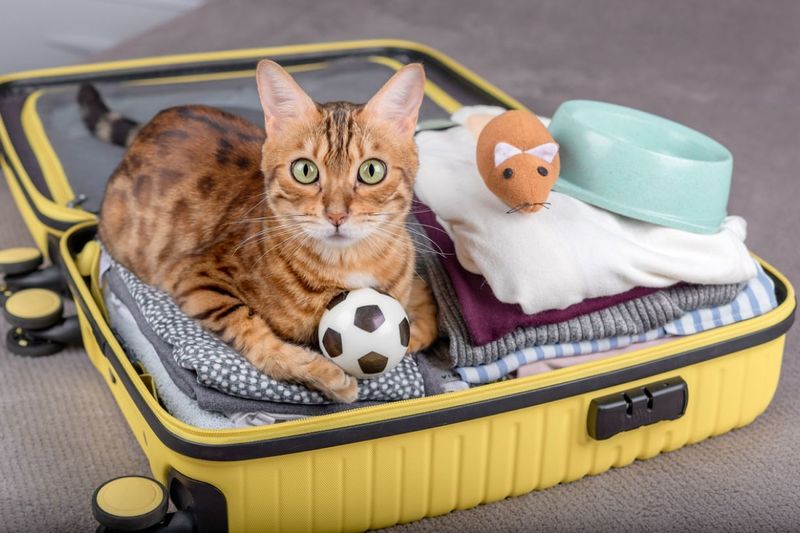📖 Table of Content:
- 1. Choose a Cat-Friendly Airline
- 2. Get an Airline-Approved Carrier
- 3. Train Your Cat to Love the Carrier
- 4. Visit the Vet for Sedation Advice
- 5. Trim the Claws Before Takeoff
- 6. Pack a Cat Travel Kit
- 7. Skip the Big Pre-Flight Meal
- 8. Prepare for Airport Security
- 9. Pick a Window Seat
- 10. Distract Your Cat During Takeoff and Landing
- 11. Keep the Carrier Closed
- 12. Hydration is Key
- 13. Ignore the Judgy Stares
- 14. Prepare for Dramatic, Post-Flight Revenge
- 15. Celebrate: You Did It!
Traveling with a cat isn’t just a journey—it’s an emotional rollercoaster featuring dramatic protests, sudden acrobatics, and deep, unspoken resentment. Unlike dogs, who might view a plane ride as an adventure, most cats interpret air travel as the end times. From the moment you pull out the carrier, they’ll start plotting their revenge. But fear not! With the right preparation (and a strong sense of humor), you can survive flying with your feline overlord.
Before you even step foot in the airport, there’s a lot to plan. Choosing the right airline, prepping your cat for the carrier, and making sure they don’t turn into a furry tornado at TSA are just a few of the hurdles you’ll face. A well-prepared travel kit, strategic feeding, and a solid in-flight game plan will make the difference between a manageable trip and total chaos. Because let’s be honest—your cat won’t be the only one freaking out if things go south at 30,000 feet.
While flying with a cat is never stress-free, there are ways to make it slightly less terrifying. With a mix of preparation, patience, and maybe a little bribery (treats work wonders), you can get through the experience with minimal scratches—physical and emotional. This guide will walk you through 15 essential tips to help you and your cat survive air travel. Buckle up, because it’s going to be a wild ride!
1. Choose a Cat-Friendly Airline
Not all airlines are thrilled about feline passengers, and some charge an arm, a leg, and maybe a whisker for the privilege. You don’t want to find out at the gate that your chosen airline considers your cat more of a “wild beast” than a “carry-on companion.” Some airlines allow in-cabin pets with advance booking, while others treat your furry friend like oversized luggage. Read the airline’s pet policy carefully to avoid surprises—like a sudden demand for paperwork you didn’t even know existed. Also, compare fees, because some airlines genuinely believe your cat deserves a seat that costs more than yours. The goal is to pick a pet-friendly airline that won’t leave you stressed before you even get to the airport.
2. Get an Airline-Approved Carrier
Your cat’s carrier needs to meet the airline’s requirements, meaning it must fit under the seat—without squishing your cat into a feline origami shape. While comfort is important, security is crucial, because if your cat escapes mid-flight, you will become the main character of a viral news story. A well-ventilated, soft-sided carrier is usually the best bet, but don’t assume that means your cat will accept it peacefully. Some cats will flop inside like royalty, while others will throw themselves against the sides as if they’re starring in a jail-break movie. The carrier should have enough room for them to sit, turn around, and, most importantly, judge you for everything that’s about to happen.
3. Train Your Cat to Love the Carrier
If you only pull out the carrier when it’s time to visit the vet or fly, your cat will immediately associate it with doom. Instead of shoving them in at the last minute and hoping for the best, start carrier training at least a few weeks before the trip. Leave it out in a cozy spot, place treats inside, and let your cat explore at their own pace. If they start using it as a hideout or even—miraculously—taking naps inside, you’re on the right track. If they avoid it like it’s cursed, you may need to bribe them with more treats or catnip. The goal is to make the carrier seem like a safe place so that travel day doesn’t begin with a high-speed chase around your apartment.
4. Visit the Vet for Sedation Advice
Before you fly, take your cat to the vet to make sure they’re healthy enough for air travel. Some airlines require a recent health certificate, and it’s better to check early rather than frantically Google “vet near me” on the way to the airport. While you’re there, casually ask about calming solutions—because let’s be real, you’re going to need them. Some cats handle travel like seasoned adventurers, while others act like they’ve been taken hostage. Your vet may recommend pheromone sprays, calming treats, or—if your cat is truly dramatic—a mild sedative. Just remember, the sedative is for the cat, not for you (no matter how much you wish otherwise).
5. Trim the Claws Before Takeoff
Your cat may not mean to hurt you, but when they panic, those little razors on their paws become weapons of mass destruction. If you don’t trim their claws before the trip, prepare to look like you’ve fought off a small but determined bear. You’ll have to take your cat out of the carrier at security, and if they freak out, you’ll be grateful they don’t have full dagger mode activated. A quick trim a few days before travel will save your hands, your arms, and possibly the faces of innocent bystanders. If trimming isn’t your cat’s favorite activity, consider bribing them with treats or employing the burrito method (wrapping them in a towel like a tiny, angry burrito).
6. Pack a Cat Travel Kit
Packing for a cat is a delicate balance—you want to bring enough to keep them comfortable, but not so much that your carry-on turns into a mobile pet store. Essentials include food, a collapsible water bowl, a few treats, a disposable litter tray or pee pads, and some familiar-smelling bedding. If your cat has a favorite toy, throw that in too, even if they just ignore it and stare at you like you’ve ruined their life. Also, bring a small bag of cleaning wipes and extra carrier liners, because accidents happen. The goal is to be prepared for anything—because with a cat, anything is possible.
7. Skip the Big Pre-Flight Meal
Feeding your cat a big meal right before a flight is a recipe for disaster—literally. A nervous stomach and turbulence are not a good mix, and you do not want to deal with a mess at 30,000 feet. Instead, feed them a small meal several hours before departure, giving them time to digest before the flight. A light stomach can help prevent motion sickness, and trust me, the last thing you want is a cat who suddenly decides now is the time to empty their stomach inside their carrier. If your cat gets cranky about the meal cutback, remind them it’s for the greater good (they won’t believe you, but it’s worth a shot).
8. Prepare for Airport Security
TSA requires you to remove your cat from the carrier while they scan it, which means you will be holding a potentially panicked, squirming ball of fluff. If your cat is a flight risk (literally), make sure they’re wearing a harness with a leash. Some cats go full limp mode when taken out of their carrier, while others bolt like they’ve been training for this very moment. Be ready for anything, and if possible, ask for a private screening room—it might save you from the horror of a public cat chase through security.
9. Pick a Window Seat
If you have any control over your seating, pick wisely. A window seat gives you a little extra privacy and prevents your cat from being surrounded on all sides. Middle seats should be avoided at all costs—no one wants to be squished between two strangers while your cat tries to tunnel to freedom. If possible, choose a seat far from passengers who look like they’ll complain about a single meow. Bonus points if you can sit near a fellow pet lover who will nod sympathetically when your cat inevitably starts their in-flight performance.
10. Distract Your Cat During Takeoff and Landing
The changing air pressure can make your cat uncomfortable, and they may start vocalizing their displeasure—loudly. To help, offer treats, a little water, or gentle ear rubs to distract them. Some cats calm down if they hear familiar voices, so feel free to whisper sweet nothings (or desperate apologies). If all else fails, wrap their carrier with a blanket to block out the chaos—just be prepared for muffled but determined complaints.
11. Keep the Carrier Closed
Your cat will try every trick in the book to convince you to let them out. They will meow pitifully, reach a paw through the zipper like a tiny prisoner begging for freedom, and possibly stare at you with the kind of betrayal usually reserved for movie villains. Do not fall for it. A loose cat on an airplane is a disaster waiting to happen—imagine them sprinting under seats, climbing onto strangers’ laps, or (worst case scenario) disappearing into the cockpit. Keep the carrier securely zipped, latched, and impenetrable to even the most cunning feline escape artist. If guilt starts creeping in, just remind yourself: a safe cat is a happy cat—even if they look at you like you’ve ruined their life.
12. Hydration is Key
Keeping your cat hydrated during the trip is important, but you also don’t want to create a mid-air bathroom emergency. Offer small amounts of water throughout the trip, but avoid overdoing it unless you really want to test how absorbent your carrier liner is. A collapsible travel bowl is your best friend here, and some cats will also lick water from a wet finger if they’re too stressed to drink from a bowl. If your cat is too nervous to drink at all, don’t panic—cats can usually go a few hours without water, and they’ll make up for it as soon as you land. Just be sure to offer plenty of fresh water once you reach your destination so they can rehydrate and, most importantly, forgive you.
13. Ignore the Judgy Stares
There’s always that one passenger who acts like your cat is the single most disruptive force in aviation history. Never mind the crying baby in row 14, or the guy snoring like a chainsaw two seats over—your cat’s occasional meow is clearly the problem. When you notice people giving you side-eye, just take a deep breath and remind yourself that your cat has every right to be here. You can even respond with a polite but passive-aggressive smile or say, “Oh, I’m so sorry—did you want me to put them in the overhead bin?” Chances are, someone else on the flight is a fellow cat lover and will give you a supportive nod as your cat delivers a particularly dramatic monologue.
14. Prepare for Dramatic, Post-Flight Revenge
Once you land, don’t expect immediate forgiveness. Your cat has just endured hours of noise, turbulence, and general indignity, and they will let you know how they feel about it. Some cats will go into silent treatment mode, glaring at you from their carrier like a disappointed boss. Others will refuse to come out even when you arrive at your destination, making you question whether they’ve permanently fused with the carrier. If they do emerge, they might stomp around with their tail flicking in anger or dramatically flop onto the floor as if they’ve survived the worst ordeal of their lives. The best way to smooth things over? Treats, snuggles (if they allow it), and an apology speech that they will pretend not to understand.
15. Celebrate: You Did It!
Congratulations—you survived flying with your cat! Whether it went surprisingly well or felt like an absolute disaster, the important thing is that you made it. Now it’s time to let your cat decompress, stretch out, and settle into their new surroundings. If you’re lucky, they’ll forgive you within a few hours. If not, prepare for a few days of cold stares and accidentally knocked-over objects. Either way, you’ve officially earned a cat-parenting medal of honor. The real question is: would you ever do this again? Maybe. But let’s be honest—next time, you’re probably Googling, “Best pet sitters near me.”
